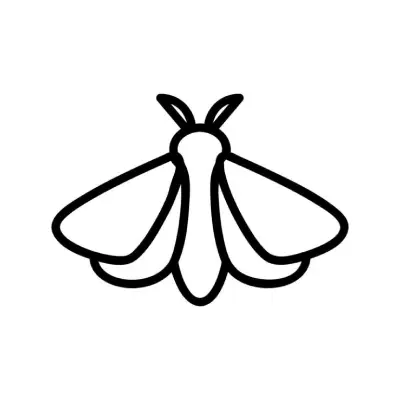Fruit Flies and Why Control Matters
Fruit flies are small, persistent insects that often appear around fruit, vegetables, and organic waste. They may seem harmless, but an unchecked fruit fly infestation can lead to contamination of food and surfaces. For homeowners, commercial kitchens, and markets in Canada, controlling these tiny pests is essential to maintain hygiene and prevent potential health issues.
These flies are attracted to ripened or decaying fruits and vegetables. Their quick reproduction and ability to survive in different environments make them one of the most common household pests. Understanding their behavior and life cycle is key to effective fruit flies control.
The fruit fly life cycle begins when eggs are laid on the surface of fermenting fruit or moist organic matter. These eggs hatch into fruit fly larvae, which feed on the decaying material. Over a few days, the larvae pupate and emerge as adult flies, ready to reproduce. This rapid cycle explains why a few unnoticed flies can quickly turn into a serious infestation.
Flies are more than just a nuisance in homes and businesses—they can spread germs and contaminate food. In Canada, people often notice flies in Canada homes, markets, or restaurants, especially during warmer months. Understanding different species of flies is the first step in effective flies control. Flies are winged insects that feed on food waste, decaying material, and sometimes even living tissue. They reproduce quickly, and a few flies can quickly become a major infestation if not addressed.
Common types of flies include house flies, fruit flies, and lesser house flies. Each type of fly has different behaviors, habitats, and risks. For example, types of flies in house kitchens usually include fruit flies, while garbage areas attract larger flies different types. Recognizing different fly species helps homeowners and businesses take appropriate action. For industrial and commercial spaces, uncontrolled flying insects can damage reputation and health safety compliance.
In addition to spreading bacteria, flies can trigger allergies and worsen respiratory issues. Children and pets are especially vulnerable to the health risks associated with small flying bugs. Even little black flies in bedrooms or patios can be irritating. By identifying insects that fly around your property, you can implement targeted flies control strategies that reduce risk and discomfort efficiently.
The Life of a Fruit Fly: Lifespan and Longevity
To effectively manage fruit flies, it’s important to understand how long do fruit flies live and their reproductive habits. The average life of a fruit fly varies depending on environmental conditions, such as temperature and food availability.
Typically, the common fruit fly lifespan ranges from a few days to several weeks. Under ideal conditions, a fruit fly’s life expectancy can reach up to 30 days, while some may survive longer without food. The fruit fly life span is influenced by access to nutrition, humidity, and temperature.
During their short lives, fruit flies are highly efficient breeders. A single female can lay hundreds of eggs in her lifetime, which means that a small population can rapidly multiply if left unchecked. Understanding the fruit fly longevity and fruit fly life stages—egg, larva, pupa, and adult—helps homeowners and business owners plan effective control strategies.
It’s also important to note that fruit fly larvae feed on fermenting materials, making kitchen sinks, trash bins, and fruit bowls common breeding grounds. By targeting these areas, you can interrupt their life cycle and reduce the fruit fly population.
Common Signs of a Fruit Fly Infestation
Knowing where do fruit flies come from and how to spot them early is crucial for timely intervention. Fruit flies are often first noticed around ripening fruits, vegetables, or garbage areas. They may also appear near drains, compost bins, or recycling containers where organic matter is present.
A fruit fly problem becomes evident when you see small, fast-moving flies hovering near food or surfaces. Their attraction to sugary or fermenting substances makes kitchens and pantries particularly vulnerable. Homeowners may also notice tiny eggs on fruit surfaces, which indicate the beginning of the fruit fly life cycle.
For commercial spaces like restaurants, grocery stores, and markets, a fruit fly infestation can impact hygiene ratings and customer trust. Regular monitoring, combined with preventive measures, is essential to avoid widespread contamination.
How Fruit Flies Develop and Reproduce
Understanding how do fruit flies reproduce is key to breaking their cycle. Fruit flies begin life as tiny eggs, often invisible to the naked eye. Within 24 to 30 hours, these eggs hatch into fruit fly larvae, which feed voraciously on nearby organic material.
After feeding for several days, the larvae pupate. The pupal stage is where transformation occurs, leading to adult flies ready to continue the cycle. The complete fruit fly life cycle can take as little as 7 to 10 days in optimal conditions, allowing populations to grow rapidly.
Knowing how fast do fruit flies multiply and how long they live helps in implementing fruit flies control measures effectively. Eliminating breeding sites and using targeted treatments can prevent new generations from emerging.
Effective Fruit Flies Control Methods
There are several strategies to manage and prevent fruit flies, from simple home remedies to professional pest control services.
1. Eliminate Food Sources
The first step in fruit flies control is removing their attraction points. Ensure fruits and vegetables are stored properly, preferably in the refrigerator. Clean up spills immediately and avoid leaving overripe produce on counters. Trash bins and compost areas should be covered and emptied regularly.
By controlling food availability, you directly impact fruit fly longevity and reduce the chances of a population boom.
2. Clean and Sanitize
Sanitation is critical in preventing fruit fly infestations. Clean kitchen drains, sinks, and garbage disposals regularly, as fruit flies can breed in moist organic material. Vinegar or baking soda solutions are effective natural cleaning agents that can remove eggs and larvae.
Frequent cleaning also interrupts the fruit fly life cycle, preventing new flies from emerging. For commercial spaces, ensure all surfaces, utensils, and storage areas are cleaned according to food safety standards.
3. Use Traps
DIY traps using apple cider vinegar or overripe fruit in a covered jar with a small opening are effective for catching adult fruit flies. Commercial traps are also available for larger infestations. Traps reduce adult populations, limiting reproduction and giving you better control over the situation.
Traps work best when combined with other preventive methods, as they target flies that have already matured and emerged.
4. Professional Pest Control
For severe infestations, professional pest control services like Eco Pest in Canada offer safe and effective solutions. Experts can assess the environment, identify breeding areas, and implement targeted treatments that are not harmful to humans or pets.
Professional intervention is particularly useful for commercial kitchens, markets, and industrial spaces, where large populations of fruit flies can affect hygiene and customer satisfaction.
Common Questions About Fruit Flies
Many people wonder do fruit flies bite or if they transmit diseases. While fruit flies are annoying, they do not sting or bite humans. Their main concern is contamination of food through contact with surfaces they land on.
Another common question is how long can fruit flies live without food. Adult fruit flies can survive a few days without nourishment, but their reproduction slows significantly. By eliminating food sources, you can naturally reduce their population over time.
People also ask where the fruit flies come from. Fruit flies originate from fermenting or decaying organic matter, and they can appear suddenly even if you haven’t brought new fruits home. Their rapid reproduction and ability to enter homes through small openings explain why infestations can start unexpectedly.




